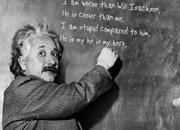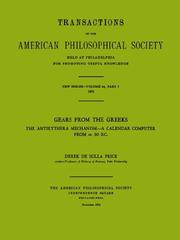| Listing 1 - 7 of 7 |
Sort by
|
Book
ISBN: 0231542739 9780231542739 9780231180467 0231180462 Year: 2017 Publisher: New York
Abstract | Keywords | Export | Availability | Bookmark
 Loading...
Loading...Choose an application
- Reference Manager
- EndNote
- RefWorks (Direct export to RefWorks)
In the Palace of Versailles there is a fabulous golden clock, made for Louis XV by the king’s engineer, Claude-Siméon Passemant. The astronomical clock shows the phases of the moon and the movements of the planets, and it will tell time—hours, minutes, seconds, and even sixtieths of seconds—until the year 9999. Passemant’s clock brings the nature of time into sharp focus in Julia Kristeva’s intricate, poetic novel The Enchanted Clock.Nivi Delisle, a psychoanalyst and magazine editor, nearly drowns while swimming off the Île de Ré; the astrophysicist Theo Passemant fishes her out of the water. They become lovers. While Theo wonders if he is descended from the clockmaker Passemant, Nivi’s son Stan, who suffers from occasional comas, develops a passion for the remarkable clock at Versailles. Soon Nivi is fixated on its maker. But then the clock is stolen, and when a young writer for Nivi’s magazine mysteriously dies, the clock is found near his body. The Enchanted Clock combines past and present, jumping back and forth between points of view and across eras from eighteenth-century Versailles to the present day. Its stylistically inventive narrative voices bring both immediacy and depth to our understanding of consciousness. Nivi’s life resembles her creator’s in many respects, coloring Kristeva’s customary erudition with autobiographical poignancy. Part detective mystery, part historical fiction, The Enchanted Clock is a philosophically and linguistically multifaceted novel, full of poetic ruminations on memory, love, and the transcendence of linear time. It is one of the most illuminating works of one of France’s great writers and thinkers.
Astronomical clocks --- Time --- Clocks, Astronomical --- Astronomical instruments --- Clocks and watches

ISBN: 0802023126 Year: 1978 Publisher: Toronto University of Toronto
Abstract | Keywords | Export | Availability | Bookmark
 Loading...
Loading...Choose an application
- Reference Manager
- EndNote
- RefWorks (Direct export to RefWorks)
Astronomical clocks --- Planetariums --- 520.98 --- Orreries --- Planetaria --- Astronomical models --- Clocks, Astronomical --- Astronomical instruments --- Clocks and watches --- Astronomical clocks. --- Planetariums. --- 520.98 Planetariums
Book
ISBN: 2600008101 9782600008105 Year: 2003 Volume: 371 Publisher: Genève Librairie Droz s.a.
Abstract | Keywords | Export | Availability | Bookmark
 Loading...
Loading...Choose an application
- Reference Manager
- EndNote
- RefWorks (Direct export to RefWorks)
Astronomie [Middeleeuwse ] --- Astronomie médiévale --- Astronomy [Medieval ] --- Medieval astronomy --- Middeleeuwse astronomie --- Orreries --- Orrerys --- Planetaires --- Planetaria --- Planetariums --- Astronomical clocks --- Astronomy, Medieval --- Astronomy, Medieval. --- Classical Latin literature --- Applied astronomy --- Astronomical models --- Clocks, Astronomical --- Astronomical instruments --- Clocks and watches --- Solar system --- Dondi dall'Orologio, Giovanni --- Early works to 1800 --- Astronomical clocks - Early works to 1800. --- Planetariums - Early works to 1800. --- Astronomy, Medieval - Early works to 1800.
Book
ISBN: 4431552618 443155260X Year: 2014 Publisher: Tokyo : Springer Japan : Imprint: Springer,
Abstract | Keywords | Export | Availability | Bookmark
 Loading...
Loading...Choose an application
- Reference Manager
- EndNote
- RefWorks (Direct export to RefWorks)
There is more to biological rhythms than circadian clocks. This book aims at promoting the exciting potential of a deeper understanding of circannual, circatidal, and circalunar clocks. It highlights new developments, summarizes existing knowledge, and integrates different perspectives with the tools and ideas of diverse fields of current biology. For predominantly pragmatic reasons, research in recent decades was mostly concerned with circadian clocks. Clocks on other timescales, however, have been largely neglected and therefore still appear "enigmatic". Thanks to the rapid development of methods in molecular biology as well as in ecology, we are now able to re-approach these clocks. Laboratories around the world are showing fresh interest and substantial progress is being made in many independent projects. The book's two sections address the moon-derived circatidal, circasemilunar, and lunar cycles on the one hand (10 chapters), and the sun-derived circannual cycles on the other (6 chapters). This work brings together authors with an expansive array of expertise and study systems, ranging from tidal cycles of marine invertebrates to annual cycles of birds and mammals, and from behavioral to genetic and epigenetic backgrounds. While great challenges remain to be mastered, the book aims at conveying the excitement of unraveling, broadly, the rhythms of life.
Astronomical clocks. --- Tides. --- Equilibrium theory of tides --- Ocean circulation --- Clocks, Astronomical --- Astronomical instruments --- Clocks and watches --- Animal ecology. --- Cytology. --- Animal physiology. --- Neurosciences. --- Animal behavior. --- Animal Ecology. --- Cell Biology. --- Animal Physiology. --- Behavioral Sciences. --- Animals --- Animals, Habits and behavior of --- Behavior, Animal --- Ethology --- Animal psychology --- Zoology --- Ethologists --- Psychology, Comparative --- Neural sciences --- Neurological sciences --- Neuroscience --- Medical sciences --- Nervous system --- Animal physiology --- Biology --- Anatomy --- Cell biology --- Cellular biology --- Cells --- Cytologists --- Ecology --- Behavior --- Physiology --- Cell biology. --- Behavioral sciences.

ISBN: 0871696479 9780871696472 Year: 1974 Volume: 64,7 Publisher: Philadelphia (Pa.) American philosophical society
Abstract | Keywords | Export | Availability | Bookmark
 Loading...
Loading...Choose an application
- Reference Manager
- EndNote
- RefWorks (Direct export to RefWorks)
Antikythera mechanism (Ancient calculator) --- Calendar, Greek --- Antikythēra Island (Greece) --- Antiquities --- Astronomical clocks --- -Astronomy, Greek --- Greek calendar --- Greek astronomy --- Clocks, Astronomical --- Astronomical instruments --- Clocks and watches --- History --- Cerigotto --- -Antiquities --- Astronomy, Greek --- Mathematical instruments --- Aegilia Island (Greece) --- Andikithira Island (Greece) --- Anticythera Island (Greece) --- Antikithera Island (Greece) --- Antikythira Island (Greece) --- Cerigotto Island (Greece) --- Nēsos Antikythēra (Greece) --- Nisos Andikithira (Greece) --- Nisos Antikythira (Greece) --- Antiquities. --- Antikythēra Island (Greece) - Antiquities
Book
ISSN: 1614659X ISBN: 1461470420 1461470439 Year: 2014 Publisher: New York, NY : Springer New York : Imprint: Springer,
Abstract | Keywords | Export | Availability | Bookmark
 Loading...
Loading...Choose an application
- Reference Manager
- EndNote
- RefWorks (Direct export to RefWorks)
To find the true story of the orrery, this book takes the reader to the vibrant, tumultous London of the 1600s. A mechanical model that shows the movements of the Moon and planets, the orrery takes its name from the Boyle family – the Earls of Orrery. Here is the fascinating story of the origins of this intricate device. Orreries are found everywhere. They appear in paintings, on the side of royal clocks, in stately home hallways, and of course, in museums all over the world. Scientific instruments to demonstrate the movements of the planets and predict their positions using measuring devices, they were devised largely by clockmakers, but many others played a role too and are given due credit. The story of the Boyles is not just relevant to a tiny corner of Ireland, but spans history. “Orrery” highlights the process of discovery and humankind’s universal fascination with the heavens, providing a fascinating example of the relationship between innovative thinking (invention) and precision engineering (execution). It will appeal to anyone interested in popular astronomy, astronomical mechanical devices, scientific instruments, the history of clocks - and even the history of aristocratic and prestigious families!
Astronomical clocks --- Astronomical models. --- Technological innovations --- History. --- Breakthroughs, Technological --- Innovations, Industrial --- Innovations, Technological --- Technical innovations --- Technological breakthroughs --- Technological change --- Lunar tellurian --- Models, Astronomical --- Clocks, Astronomical --- Physics. --- Observations, Astronomical. --- Astronomy --- Astronomy. --- Astronomy, Observations and Techniques. --- Popular Science in Astronomy. --- History of Science. --- Observations. --- Creative ability in technology --- Inventions --- Domestication of technology --- Innovation relay centers --- Research, Industrial --- Technology transfer --- Astronomical instruments --- Clocks and watches --- Annals --- Auxiliary sciences of history --- Astronomy—Observations. --- Astronomical observations --- Observations, Astronomical
Book
ISBN: 3662484455 3662484471 Year: 2016 Publisher: Berlin, Heidelberg : Springer Berlin Heidelberg : Imprint: Springer,
Abstract | Keywords | Export | Availability | Bookmark
 Loading...
Loading...Choose an application
- Reference Manager
- EndNote
- RefWorks (Direct export to RefWorks)
This book presents a systematic design methodology for decoding the interior structure of the Antikythera mechanism, an astronomical device from ancient Greece. The historical background, surviving evidence and reconstructions of the mechanism are introduced, and the historical development of astronomical achievements and various astronomical instruments are investigated. Pursuing an approach based on the conceptual design of modern mechanisms and bearing in mind the standards of science and technology at the time, all feasible designs of the six lost/incomplete/unclear subsystems are synthesized as illustrated examples, and 48 feasible designs of the complete interior structure are presented. This approach provides not only a logical tool for applying modern mechanical engineering knowledge to the reconstruction of the Antikythera mechanism, but also an innovative research direction for identifying the original structures of the mechanism in the future. In short, the book offers valuable new insights for all readers who are interested in the Antikythera mechanism.
Physics - General --- Physics --- Physical Sciences & Mathematics --- Antikythera mechanism (Ancient calculator) --- Astronomical clocks --- Calendar, Greek. --- History. --- Greek calendar --- Clocks, Astronomical --- Astronomical instruments --- Clocks and watches --- Mathematical instruments --- Engineering. --- Science --- History and Philosophical Foundations of Physics. --- Machinery and Machine Elements. --- Science Education. --- History of Science. --- Study and teaching. --- Annals --- Auxiliary sciences of history --- Science education --- Scientific education --- Construction --- Industrial arts --- Technology --- Physics. --- Machinery. --- Science education. --- Machinery --- Machines --- Manufactures --- Power (Mechanics) --- Mechanical engineering --- Motors --- Power transmission --- Natural philosophy --- Philosophy, Natural --- Physical sciences --- Dynamics --- Curious devices
| Listing 1 - 7 of 7 |
Sort by
|

 Search
Search Feedback
Feedback About UniCat
About UniCat  Help
Help News
News